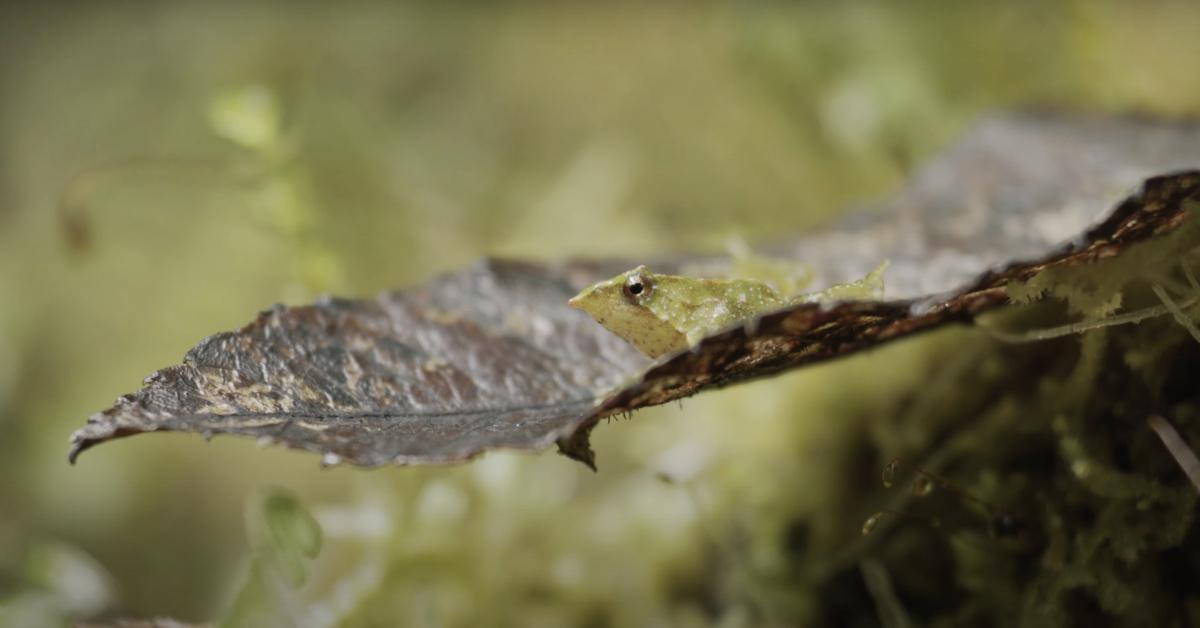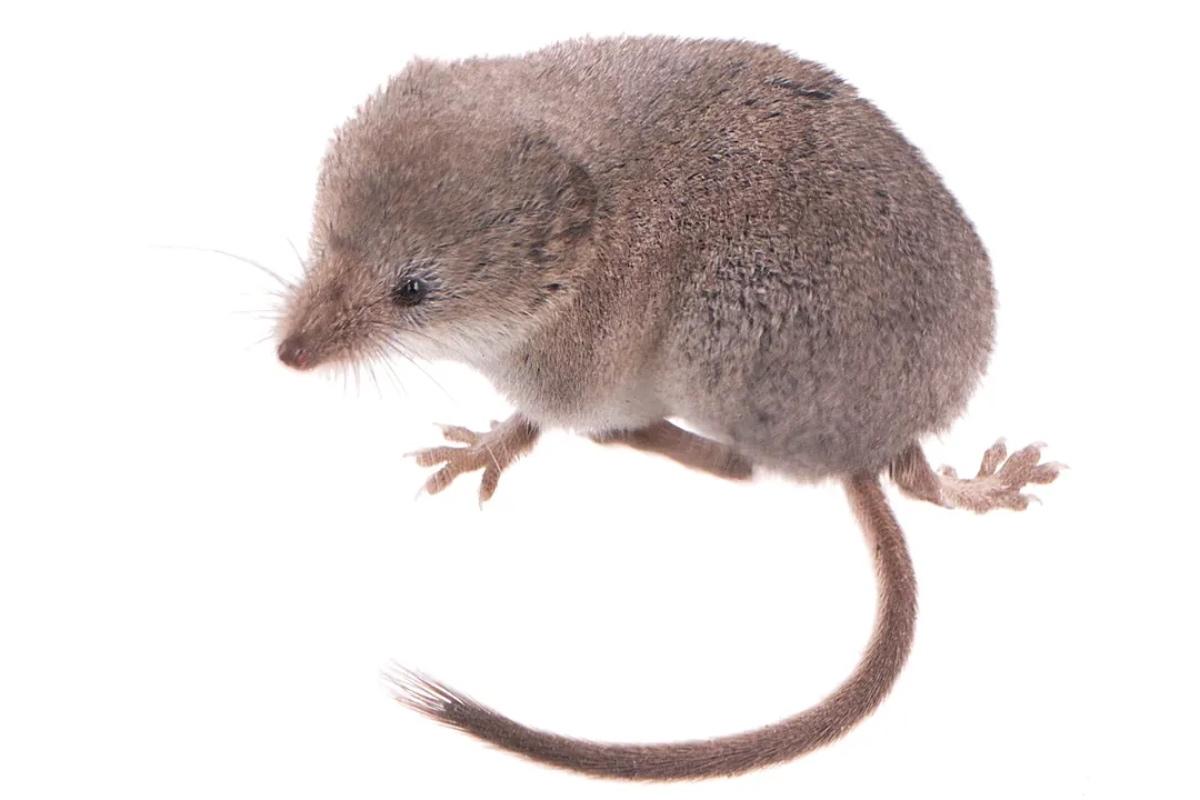New Species Discovered — Or Rediscovered — In 2025
We'll continue updating this running list of some of the new and rare species discovered — or rediscovered — throughout 2025.
Updated Feb. 26 2025, 9:32 a.m. ET

A harrowing 2024 study published in the journal Science reveals a grim reality: that the ongoing climate crisis has put Earth on track to lose about 160,000 species, with a worst-case scenario loss of 3 million creatures.
But there is a bright spot in all the gloom and doom: scientists continue to discover new species of animals and plants.
While 2024 brought many new species (and some rediscovered ones!) into the spotlight, 2025 has provided many discoveries as well. Check out some of the most unique or fascinating species below.
The Ovicula biradiata plant, or the "Wooly Devil," was discovered at Big Bend National Park.
On Feb. 24, 2025, scientists confirmed that a plant previously discovered in March 2024 is indeed a new species. The Big Bend National Park Service announced the discovery and added that the plant's name comes from its fuzzy, sheep's wool-like appearance.
Big Bend National Park Superintendent Anjna O’Connor said, "Now that the species has been identified and named, there is a tremendous amount we have yet to learn about it. I’m excited to discover whether there are other populations in the park, details of its life cycle, what are the pollinators, and due to the current drought, if it will be observed at all this spring."
The Gibellula attenboroughii fungus, named after Sir David Attenborough, can essentially turn spiders into zombies.
Research published in January 2025 documented the discovery of the Gibellula attenboroughii, a fungus named after the legendary Sir David Attenborough. This new species has the ability to infect certain types of orb-weaving spiders, and the infection actually causes the spiders to have "behavioral changes similar to those reported for zombie ants," per the study.
This fungus species is part of the Gibellula (Cordycipitaceae: Hypocreales) genus — which is not all that different from Cordyceps, the zombie fungus in HBO's The Last of Us.
The Melanocetus johnsonii, or black seadevil angler fish, was captured in photos during a rare sighting.
On Feb. 9, 2025, CNN reported that researchers with the non-government organization Condrik Tenerife took photographs of an adult black seadevil angler fish near the surface. The researchers had been on a shark research expedition when the good fortune struck. Typically, these fish appear between 1,000 and 2,000 meters below the surface, making their appearance in clear blue water a surprise.
Previously, in 2014, researchers of the Monterey Bay Aquarium Research Institute took photos of the black seadevil angler fish in their natural habitat, per Smithsonian Magazine. At the time, researchers noted that the fish's small stature (sometimes just three and a half inches long) and their preference for darkness made sightings rare.
A new group of endangered Darwin's frogs were born in London after an emergency mission to rescue the species.
In October 2024, scientists raced against the clock to rescue 55 endangered Darwin's frogs, or Rhinoderma darwinii, from Tantauco Park in Chile, where a lethal fungus decimated 90 percent of the population, per the Guardian. The frogs were then transported to a biosecure room at the Zoological Society of London. Researchers hope to rebuild the population and study potential treatments for chytrid fungus to return the frogs to the wild.
On Feb. 3, 2025, researchers from the Zoological Society of London announced that once settled into the customized habitat, male frogs carrying tadpoles released 33 new froglets! This is the first group of Darwin's frogs
A documentary about the emergency rescue recorded for the Zoological Society of London by wildlife filmmaker Paul Glynn is available to watch on YouTube.
The elusive Mount Lyell shrew was captured on film for the first time.
On Jan. 31, 2025, three determined undergraduate students from California accomplished the impossible: successfully photographing the Mount Lyell shrew, which had never been done before due to the shrew's extremely high metabolism, per CBS News.
The trio — Vishal Subramanyan, Prakrit Jain and Harper Forbes — initially laid out over 100 traps and spent three days and four nights in the Eastern Sierra Nevada region in November 2024 to get the perfect shot. They checked the traps every two hours to ensure the animal wouldn't be harmed as a result of their quest.
In addition to helping raise awareness of the mammal, which will have a projected habitat loss of 89 percent by 2080 due to climate change, per UC Berkeley, the students told CBS News their photos will be entered to scientific outlets to aid with further research.
A new species of funnel-web spider nicknamed "Big boy" and named Atrax christenseni for one of their discoverers.
On Jan. 14, 2025, Reuters reported that a new species of funnel-web spider had been discovered in part by Kane Christensen, former head of spiders at the Australian Reptile Park. Christiansen had been observing the venomous spiders coming into the Australian Reptile Park since 2003 and noticed that some, especially from the Newcastle area, were larger than others, per the Guardian.
Thanks to research published on Jan. 13, 2024, by the Australian Museum, Flinders University, and Germany's Leibniz Institute, the "Big boy" spiders were officially declared a new species entirely than the Sydney funnel-web spiders and named Atrax christenseni in tribute to Christensen.
Additionally, per the Guardian, during the years-long process of classifying the Atrax christenseni, scientists also discovered a third species of funnel-web spider.
A new species of moray eel called Uropterygius hades has been named for the Greek god of the underworld.
On the precipice of the new year, a study published in December 2024 in the journal ZooKeys revealed a new species of moray eel living in the "Central-Indo Pacific Ocean." Unlike other eels, the study notes this rare variant prefers to live in murky estuaries where they can burrow or hide in the mud — unusual for a species that typically resides in saltwater. Additionally, researchers noted that the U. hades has particularly small eyes and is highly sensitive to light.
According to IFL Science, Dr. Wen-Chien Huang, the study's first author, was inspired by Ralph Fiennes' performance as Hades in Clash of the Titans and thus, the U. hades got their name. The eel was also discovered somewhat by accident, as three researchers investigating a cave in the Philippines were hoping to find a bean-eyed snake moray, or Uropterygius cyamommatus.
This article, originally published on Jan. 2, 2025, has been updated.

